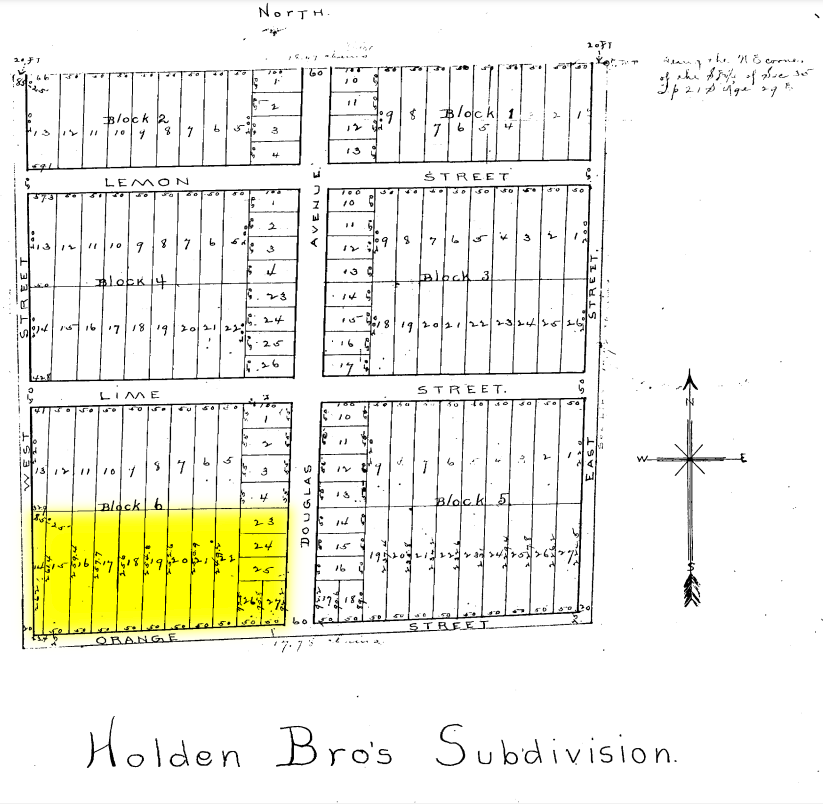S23: Week 8—Past & Present Landscapes
- Casey Wolf

- Mar 7, 2023
- 3 min read
In 1958, the School Board sought to “quiet the title to a property adjacent to Hungerford” where the Board “has maintained and operated a school on property in the Holden Brothers Subdivision.” Quiet titles are intended to establish ownership over a property by “quieting” any potential competing claims. The article maintains that the property in question was originally filed in 1892 by Gordon R. Rogers, and was designated as exempt from taxation as a school district. [1]

[1] “School Board Seeks to Quiet Title on Land Near Hungerford School,” Orlando Evening Star, July 9, 1958.
The Orange County Comptroller records show Rogers as a party in several land transactions, evidencing his ownership of multiple parcels of land. Searching for “Holden Bros.“ in these results shows one transaction from this time between Rogers and Robert Pinder. A record filed on November 21, 1891 shows a transfer of land in the Holden Brothers plat which included Lots 14 through 27 in Block 6 of the Holden Brothers Subdivision addition to Eatonville. [2] The plat map of the Holden Brothers addition shows the land is located near Lemon, Lime, and Orange Avenues. [3]
[2] Warranty Deed showing transfer of land [3] Holden Brothers Plat Map
Using the county’s GIS visualization, we can place the location of this land in proximity to Hungerford as it is reported to be adjacent to the school. Finding Hungerford, we can see a nearby Holden Brothers subdivision—now subdivided into two separate plats: Pindar and Calhoun. Thus, the Pindar name appears on both the land transfer document and on county documents to define boundaries on the present landscape. It also expanded to include equivalent lots on the adjacent block 5. Applying the “zoning” filter on the visualization shows that the Pindar subdivision is now zoned for residential use. Comparing the past and present landscapes alongside one another shows a change over time in the street names. Lime and Lemon Avenues became separated by Orange, while East and West Streets shifted—potentially in the wake of population growth and school expansion.

Expansions and improvements continued into 1966, where they were mentioned in the context of the school losing enrollment despite improvements and Hungerford’s strong ties to the surrounding community. The improvements referenced in a July 30, 1966 Orlando Sentinel article likely refer to those made by the school board. [4] However, it is important to highlight that some improvements to the school’s campus also include contributions from community members. Three years prior, a group of Eatonville community members donated time and energy to build out Hungerford’s recreational and sports facilities, including bleachers, a concession stand, and restrooms. [5]

[5] "Hungerford Recognition Night Held," Orlando Sentinel, Nov. 11, 1963.
The July 30 article also expressed fear that, this time, declining enrollment at Hungerford would be due to integration. This concern places Hungerford within the context of the complicated logistics of integration. As time passed following Brown vs. Board of Education, a reluctance by local goverments to actively pursue integration policies produced lawsuits with the intention of encouraging the implementation of such policies. If a “50-50 system” of integration was adopted, students would be pulled from Hungerford to attend white schools, despite their “prefer[ence] to remain where they are, in the school from which their brothers, sisters, and sometimes their parents, graduated.” [6]

“Suit to Hasten School Integration?” Orlando Sentinel, July 30, 1966.
Declining enrollment and a potential direct threat to maintaining it likely led to the school board’s decision, one year later, “to convert the high school to a technical-vocational center.” This decision was likely made in an effort to bolster enrollment by adapting to present and future needs of students entering the workforce or post-secondary education—bringing with it even more changes to the school. [7]
Sources
[1] “School Board Seeks to Quiet Title on Land Near Hungerford School,” Orlando Evening Star, July 9, 1958.
[2] Warranty Deed from Gordon R. Rogers and Robert Pender, 1891, Orange County Comptroller.
[3] Holden Brothers addition to Eatonville Plat Map
[4] “Suit to Hasten School Integration?” Orlando Sentinel, July 30, 1966.
[5] "Hungerford Recognition Night Held," Orlando Sentinel, Nov. 11, 1963.
[6] “Suit to Hasten School Integration?” Orlando Sentinel, July 30, 1966.
[7] "Board Insists on Name Change for Hungerford," Orlando Sentinel, July 11, 1967.





Comments